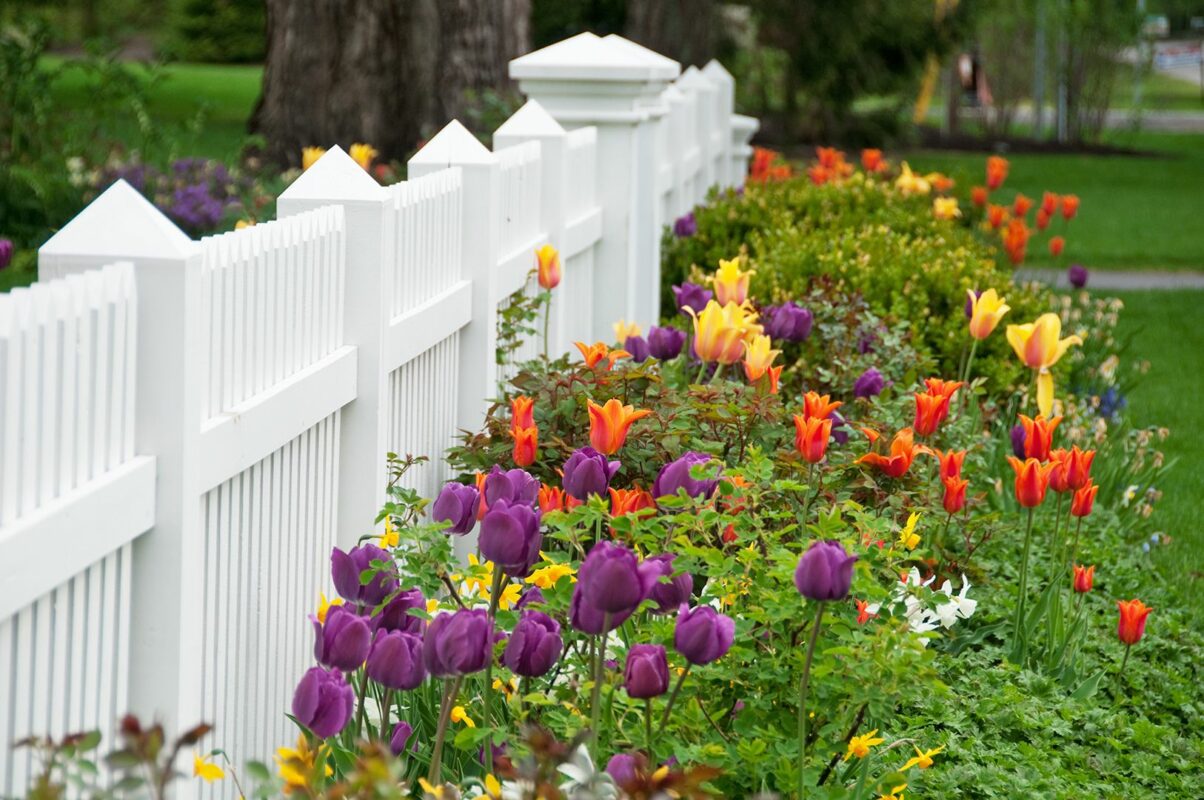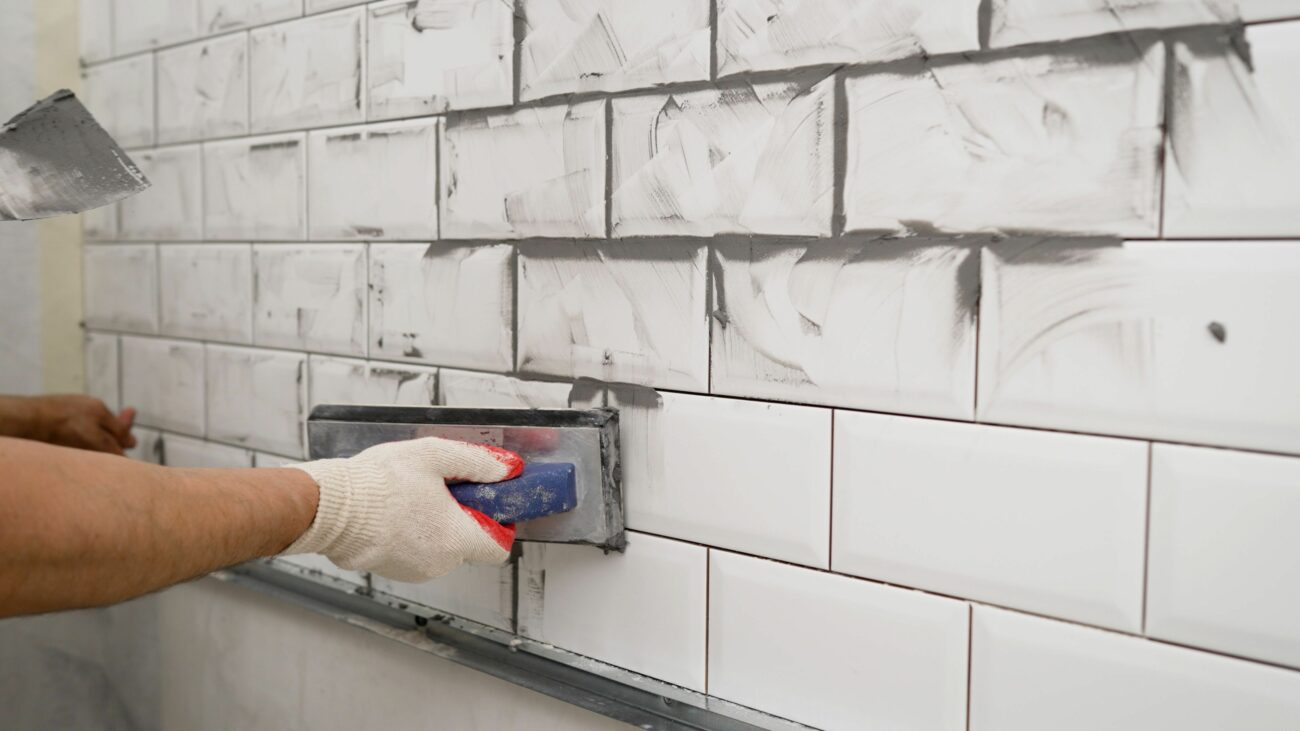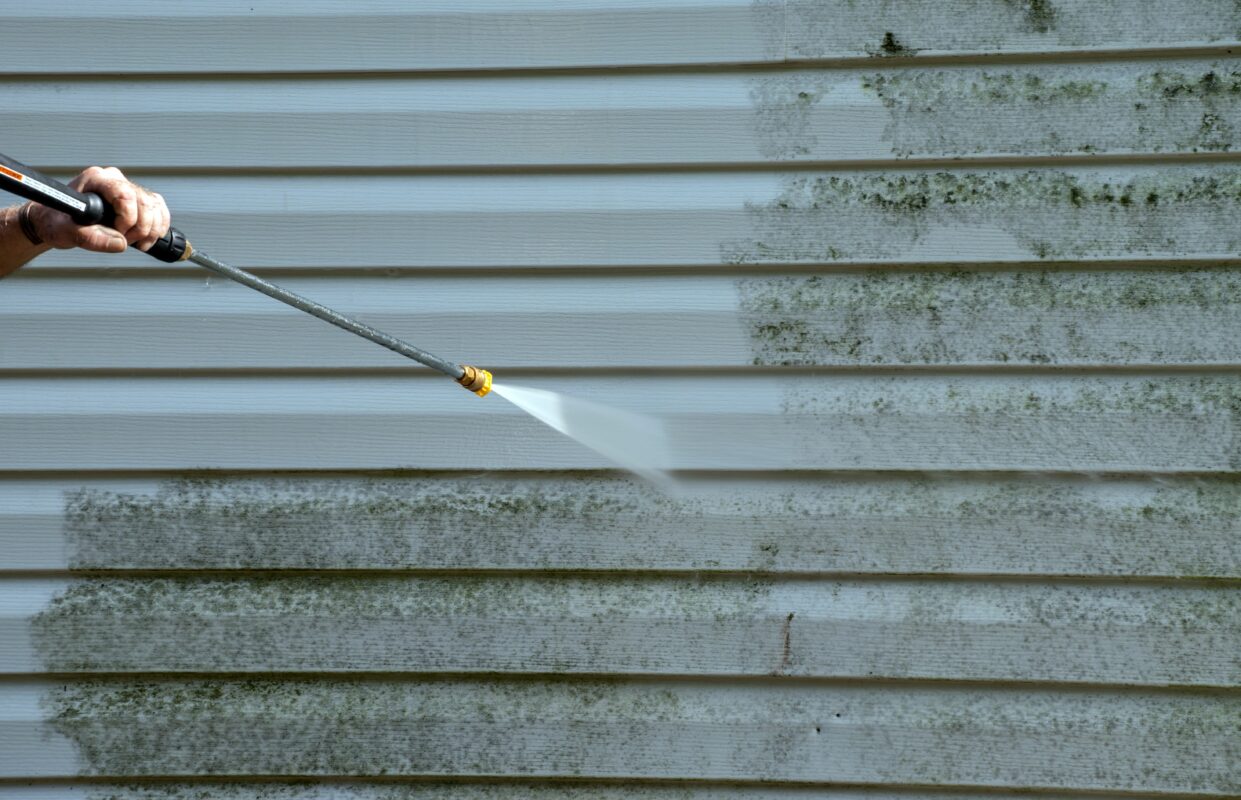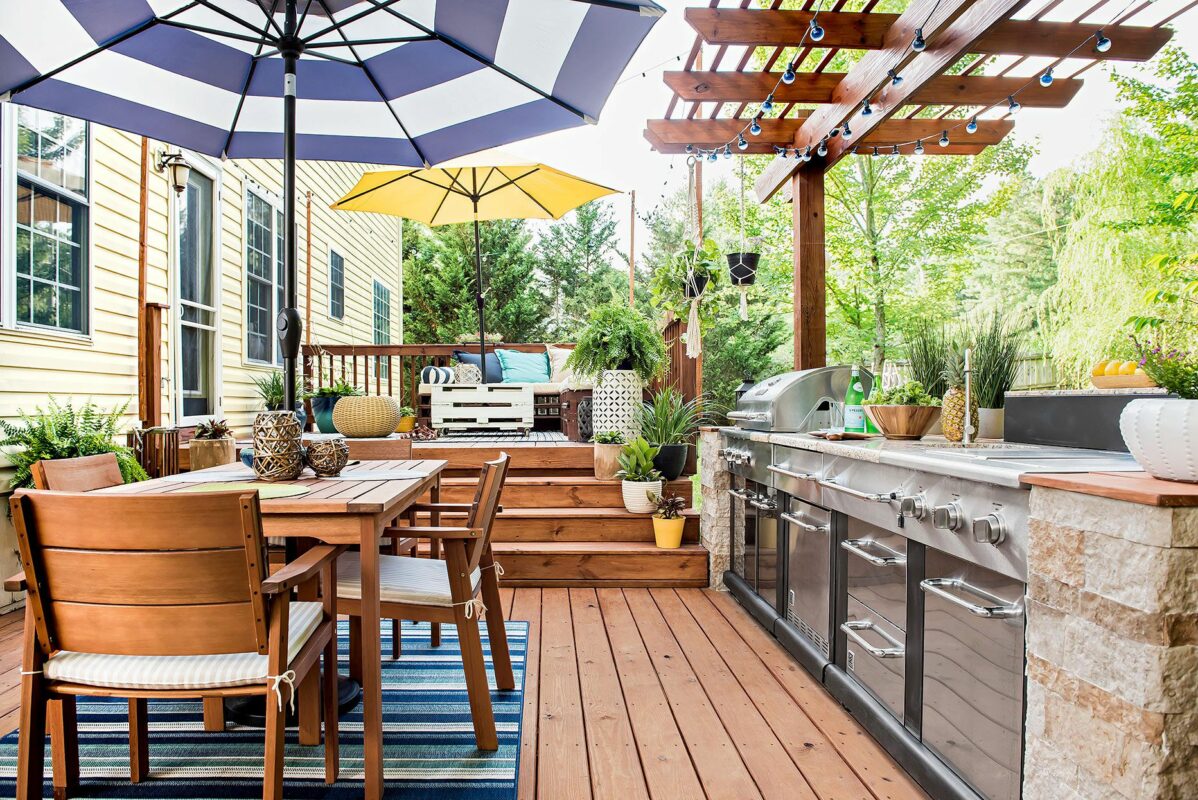Basements often serve as multipurpose spaces with unique requirements due to moisture and temperature fluctuations. Even in dry weather, basement flooring can leach residual moisture in the form of vapor from the ground, resulting in damage. In heavy rains, some basements may experience flooding or groundwater intrusion. Selecting the right flooring for a below-grade environment is crucial to ensure durability, comfort, and aesthetic appeal. Below, discover the best flooring for basements, including vinyl, tile, laminate, and more.
The Best Flooring for Basements
The best basement flooring should be waterproof or moisture-resistant. Hard, inorganic materials with few layers are ideal. Here are some of the best flooring options for any basement.
1. Ceramic and Porcelain Tile
Tile flooring is a popular basement choice due to its durability and moisture resistance. Consider ceramic, porcelain, or natural stone tiles, which come in different styles, colors, and patterns for versatile design options.
Tiles are water-resistant and can be installed directly over concrete. However, installation can be laborious and, therefore, more expensive for large areas.
Pros: Ceramic and porcelain tile floors are resistant to moisture, easy to clean and maintain, durable, scratch- and stain-resistant, and available in various designs and colors to suit different aesthetic preferences. Tile can also mimic the look of wood or stone.
Cons: Tile flooring can be cold underfoot, especially in colder climates. Installation may require a level subfloor, which is labor-intensive and costly. Grout lines may need regular maintenance and periodic sealing to prevent mold growth and moisture penetration.
Cost: The average cost of installing tile flooring is around $20 per square foot. However, various factors influence the final cost, including square footage, type of tile, and the location where work is performed. Porcelain tiles are typically pricier than ceramic tiles.
2. Vinyl
Vinyl, especially luxury vinyl plank (LVP) or luxury vinyl tile (LVT), is another popular basement flooring option. Made of PVC and inorganic material, vinyl flooring is resilient, waterproof, and available in various styles to mimic natural materials, including hardwood, tile, or stone.
Vinyl flooring typically comes in both sheet and tile or plank form. Sheet vinyl flooring is the preferred choice for below-grade floors. It comes in large continuous sheets or rolls, which, when applied over an array of floors, including concrete, wood, or tile, create a nearly seamless, water-impervious surface that increases your basement’s moisture resistance. Tile vinyl flooring tends to have multiple seams, making it susceptible to moisture infiltration if water stands for long.
Pros: Vinyl flooring is waterproof, durable, easy to install, comfortable underfoot, budget-friendly, and available in different styles, patterns, and colors.
Cons: It can be susceptible to scratching, and certain products may emit volatile organic compounds (VOCs).
Cost: Vinyl flooring installation costs typically range from $2 to $14 per square foot.
3. Epoxy
Epoxy flooring is a resinous flooring composed of epoxy resin and a hardening agent. It creates a seamless, durable, moisture-resistant, and chemical-resistant surface ideal for various applications, including basement flooring. Epoxy is also available in multiple colors, patterns, and finishes, allowing homeowners to customize their basements to suit their design aesthetic. Epoxy can be combined with decorative flakes, metallic pigments, or quartz aggregates for added visual appeal.
Pros: Epoxy flooring is durable and long-lasting, moisture resistant, chemical resistant, and easy to clean and maintain.
Cons: Epoxy flooring installation typically requires professional expertise and specialized equipment. Proper surface preparation is necessary for a successful installation. The process may involve concrete repair, grinding, and etching to ensure adhesion. The initial odor can be strong, requiring plenty of ventilation. All of these factors affect the price.
Cost: The cost depends on the square footage, subfloor condition, desired finish, and additional customization options. On average, expect to pay between $3 and $12 per square foot.
4. Engineered Wood
Engineered wood flooring is a composite product of layered wood veneers and adhesives. Unlike solid hardwood, engineered wood is less susceptible to moisture damage. Its layered construction helps mitigate the effects of humidity and moisture, minimizing the risk of warping or cupping in damp basements. This type of flooring is durable and can withstand high traffic.
Engineered wood also offers the timeless beauty and warmth of natural wood. It comes in various styles, finishes, and plank sizes, offering many options to complement any decor style.
Pros: Engineered wood flooring is moisture resistant, versatile in design, easy to maintain, and durable, offering excellent value for money in the long run. It also provides easy installation in click-lock or tongue-and-groove systems, allowing straightforward DIY installation without adhesives and nails.
Cons: While engineered wood is more affordable than solid hardwood, it’s still more pricey than laminate or vinyl, and it is susceptible to scratches and dents. Depending on the thickness of the top veneer layer, engineered wood flooring may have limited refinishing options compared to solid wood.
Cost: The cost depends on various factors, including the wood species (exotic wood species command high prices), quality of construction, and installation methods. Homeowners should expect to pay between $5 and $16 per square foot for materials and installation.
5. Laminate
Laminate is a synthetic flooring product with multiple fused layers. It consists of a decorative photographic layer, a high-density fiberboard (HDF) core layer, and a transparent layer that protects against scratches and stains. While not inherently waterproof, laminate flooring is relatively moisture-resistant compared to solid hardwood flooring. It can withstand occasional spills and moisture without warping or damage, making it suitable for basement environments when installed with proper underlayment and sealing.
Pros: Laminate flooring is budget-friendly, moisture-resistant, durable, and easy to install with a click-lock or tongue-and-groove installation system.
Cons: While more moisture-resistant than solid hardwood flooring, laminate flooring is still susceptible to some water damage when exposed to flooding. It cannot be sanded or refinished, and it can be noisy underfoot.
Cost: The average cost of laminate is $3–$15 per square foot. However, the total cost depends on several factors, including material quality, plank thickness, and brand.
Best Basement Flooring Options Based on Weather Conditions
Certain flooring types might be more suitable than others for your basement, depending on your area’s climate and weather conditions. Tile and vinyl flooring are excellent choices in areas prone to high humidity or moisture, such as coastal or high groundwater regions. Engineered wood and carpet flooring can help maintain warmth and comfort in cold climates.
Best Basement Flooring Options Based on Usage
The intended usage of your basement plays a role in choosing the right type of flooring.
Carpet tiles or interlocking rubber tiles can provide comfort and cushioning underfoot for basements used as recreational or entertainment spaces. Waterproof options like tile or vinyl are ideal for spill-prone areas, such as laundry rooms or bathrooms. Rubber flooring offers durability and shock absorption for basements utilized as home gyms or workshops. Laminate and cork flooring work for a home office or study. Epoxy and concrete flooring are ideal for a basement workshop or utility room.
Care Tips for Basement Flooring
Regardless of the type of flooring, proper maintenance is essential to prolong its life span. Regularly clean it with a damp mop or vacuum to prevent dirt and debris buildup. Ensure the space is aired out periodically and remains well-ventilated. Additionally, promptly address spills or moisture issues to prevent damage and mold growth.
By understanding the unique requirements of basement environments and choosing suitable flooring options, homeowners can create functional and inviting spaces that withstand the challenges of below-grade living.







